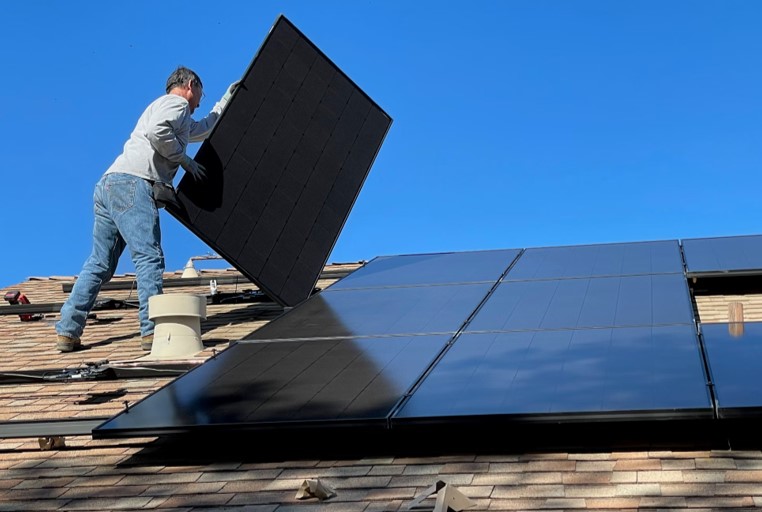So, you’ve decided to leap to renewable energy by installing solar panels. Investing in solar energy not only reduces your carbon footprint but also offers long-term savings on your electricity bills. However, before you start harnessing the power of the sun, it’s crucial to ensure your solar panel installation goes smoothly and efficiently.
Choose the Right Location
The first step in your solar panel installation journey is selecting the optimal location for your panels. Ideally, you want a spot that receives ample sunlight throughout the day, without any obstructions to your solar panels like tall buildings or trees casting shadows. South-facing roofs tend to receive the most sunlight in the northern hemisphere, maximizing your panel's energy production. Additionally, consider the angle of your roof - a slope that matches your latitude can optimize energy generation.
Assess Your Roof's Condition
Before mounting solar panels, it’s essential to evaluate the condition of your roof. Ensure it’s structurally sound and capable of supporting the weight of the panels. If your roof requires repairs or replacement, it's best to address these issues before installing solar panels. Neglecting roof maintenance could lead to complications and additional costs down the line. Additionally, check for any shading factors or vents that might obstruct sunlight and plan accordingly.
- Look for signs of wear and tear such as cracked or missing shingles, water damage, or sagging areas.
- Consider consulting a professional roofer to assess the integrity of your roof and identify any necessary repairs or reinforcements.
- Take into account the age of your roof; if it's nearing the end of its lifespan, investing in a new roof before installing solar panels can prevent future issues and ensure a secure foundation for your solar array.
Research and Select a Reputable Installer
While DIY solar panel installations are feasible for some, hiring a professional installer can save you time, ensure safety, and guarantee optimal performance. Take the time to research and select a reputable solar installation company with experience in your area. For instance, if you're located in Antioch, working with a trusted solar installation Antioch provider ensures they are familiar with local regulations, permits, and environmental factors specific to your region. Look for certifications, customer reviews, and examples of past projects to gauge their reliability and expertise.
Look for certifications, customer reviews, and examples of past projects to gauge their reliability and expertise. A qualified installer will handle permits, and equipment procurement, and ensure your system complies with local regulations.
Understand Incentives and Financing Options
Solar panel installations often come with significant upfront costs, but various incentives and financing options can make them more accessible. Research available rebates, tax credits, and incentive programs offered by federal, state, and local governments. Additionally, explore financing options such as solar loans, leases, or power purchase agreements (PPAs) that can help spread out the cost over time. Understanding these incentives and financing options can significantly reduce your out-of-pocket expenses and accelerate your return on investment (ROI).
Optimize System Size and Components
When planning your solar panel installation, it's essential to optimize the system size and select the right components to meet your energy needs. Conduct an energy audit to determine your average electricity consumption and size your solar array accordingly. Oversizing or under sizing your system can impact its efficiency and overall performance.
Additionally, choose high-quality solar panels, inverters, and mounting hardware from reputable manufacturers. While cheaper components may seem appealing, investing in quality equipment ensures durability and longevity, ultimately maximizing your system's return on investment.
Consider Maintenance and Monitoring
While solar panels require minimal maintenance, it's essential to consider ongoing upkeep and monitoring to ensure optimal performance. Regularly inspect your panels for debris, dirt, or shading that could affect their efficiency.
- Cleaning your panels with a soft brush and water several times a year can help maximize sunlight absorption.
- Additionally, invest in a monitoring system that tracks your system's performance and alerts you to any issues or drops in production.
- Monitoring allows you to address potential problems promptly, ensuring your system operates at peak efficiency for years to come.
Educate Yourself on Net Metering and Grid Integration
Understanding net metering and grid integration is crucial for maximizing the benefits of your solar panel installation. Net metering allows you to sell excess energy generated by your solar panels back to the grid, offsetting your electricity costs further. Familiarize yourself with your utility company's net metering policies and regulations to take full advantage of this opportunity. Additionally, consider grid-tied systems with battery backup options for added resilience during power outages.
By optimizing your system size and components, considering maintenance and monitoring, and educating yourself on net metering and grid integration, you can ensure a smooth and successful setup that maximizes the benefits of solar energy. Whether you're looking to reduce your carbon footprint, save money on electricity bills, or increase energy independence, investing in solar power is a sustainable and rewarding choice. With the right approach and attention to detail, you can harness the power of the sun to power your home or business efficiently for years to come.










